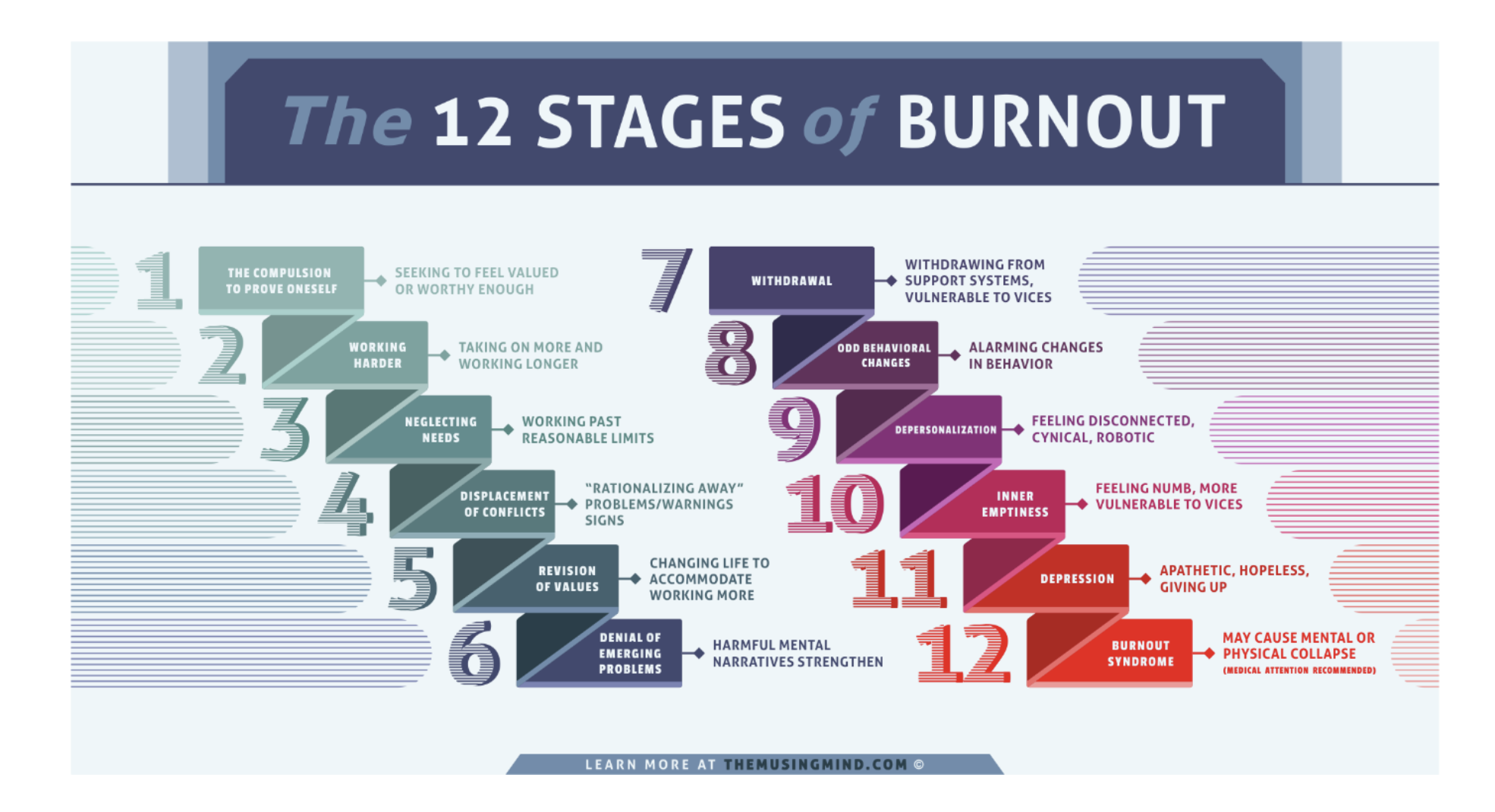Blog

Burnout: Recognizing the Signs and Taking Action
by eBen Assist Sdn Bhd
Burnout: Are You at Risk?
It’s late, and you’ve finally made it home after a long, exhausting day at work. From the moment you stepped into the office, it was non-stop: urgent emails, back-to-back meetings that ran late, and last-minute tasks from your boss that had to be done by the end of the day. You worked overtime just to wrap things up, only to get stuck in a horrible traffic jam on the way home.
Hungry, drained, and frustrated, you sat in your car, wishing you could escape. By the time you walked through your front door, you were completely spent. You managed to eat dinner, but you had no energy left to enjoy your evening. The things you used to love—reading, watching your favorite show, or spending time with loved ones—no longer felt appealing. All you wanted was to lie in bed and do nothing.
But even sleep didn’t feel like a relief. You dreaded waking up because you knew tomorrow would be the same: another exhausting, overwhelming and unfulfilling day.
This isn’t just a bad day—it’s your new normal. The thought of waking up tomorrow to repeat the same cycle fills you with dread. Does this sound familiar? If so, you may be experiencing burnout.
What is Burnout?
Burnout is more than just feeling tired. It’s a state of chronic physical, emotional, and mental exhaustion caused by prolonged stress at work. According to the U.S. Centers for Disease Control and Prevention (2023), burnout happens when there are excessive demands on you and not enough resources to meet them.
The American Psychological Association (2018) describes burnout as having three key signs:
- Exhaustion: Feeling drained and unable to recharge.
- Detachment:Losing interest in your work and feeling disconnected from others.
- Reduced Performance:Struggling to focus, meet deadlines, or feel productive.
Burnout is so serious that it’s now recognized by the World Health Organization (2024) as an occupational phenomenon in the International Classification of Diseases (ICD-11) .
Alarming Burnout Statistics in Malaysia
Burnout is a growing problem in Malaysia. Recent data from Employment Hero (2024) shows:
- 67% of employees in Malaysia felt burnt out in the past three months. That’s two out of every three workers!

- Millennials are the most affected (69%), followed by Gen Z (64%), Gen X (61%), and Baby Boomers (38%).

Interestingly, productivity levels have risen from 46% in 2022 to 59% in 2024 (Employment Hero, 2024). But this isn’t necessarily good news. Employees are pushing themselves too hard, sacrificing their health and well-being to meet work demands. This short-term productivity comes at a cost: long-term health issues, lower motivation, and declining performance (American Psychological Association, 2018).
The Impact of Burnout
Burnout doesn’t just affect individuals—it has far-reaching consequences for organizations and society.
- Health and Well-Being
Burnout can lead to:- Mental health issues: Anxiety, depression, and chronic fatigue (Edú-Valsania et al., 2022).
- Physical health problems: Sleep disorders, digestive issues, and even heart disease (Edú-Valsania et al., 2022).
- Organizational Culture
Burnout harms workplace morale, reduces employee engagement, and increases turnover rates (Employment Hero, 2024). When employees are burnt out, they’re less likely to collaborate, innovate, or stay with the company long-term. - Economic and Productivity Risks
While employees may seem productive in the short term, burnout leads to long-term declines in performance. Organizations face higher absenteeism, increased healthcare costs, and a loss of talent (Employment Hero, 2024).
How Employers Can Help
Combating burnout requires action from employers. Here are four strategies to create a healthier, more supportive workplace (Employment Hero, 2024):
- Manage Workloads
- Set realistic expectations and deadlines.
- Provide tools and training to help employees prioritize tasks.
- Train managers to recognize signs of burnout and intervene early.
- Support Mental Health
- Invest in Employee Assistance Programs (EAPs) and confidential counseling services.
- Promote a culture where mental health discussions are normal and stigma-free.
- Offer Flexible Work Arrangements
- Expand remote and hybrid work options to improve work-life balance.
- Tailor flexibility to meet the needs of different employee groups (e.g., working parents, and younger workers).
- Listen to Employees
- Conduct regular surveys and one-on-one check-ins to understand employee stressors.
- Use feedback to design meaningful wellness initiatives.
Take the First Step Today

For Employees: You Don’t Have to Face Burnout Alone
If you’re feeling overwhelmed, exhausted, or stuck, it’s time to prioritize your well-being. Burnout doesn’t have to be your normal. Here’s how you can start:
- Acknowledge the Signs: Recognize the symptoms of burnout—exhaustion, detachment, and reduced performance.
- Set Boundaries: Learn to say no to excessive workloads and prioritize self-care.
- Seek Support: Talk to a trusted friend, family member, or professional counselor.
At eBen Assist, we’re here to help. Our compassionate, licensed counselors provide the tools and support you need to overcome burnout and thrive.
For Employers Without EAP Services: Build a Healthier Workplace
If your organization doesn’t have an Employee Assistance Program (EAP), now is the time to take action. Burnout doesn’t just hurt employees—it impacts your bottom line through reduced productivity, higher turnover, and increased healthcare costs.
Here’s how you can start:
- Assess Your Workplace: Conduct surveys or focus groups to understand employee stressors and needs.
- Invest in Mental Health: Partner with professional counseling services like eBen Assist to provide confidential support for your team.
- Promote Work-Life Balance: Offer flexible work arrangements and encourage employees to take breaks and use their leave.
At eBen Assist, we specialize in helping organizations like yours create healthier, more supportive workplaces. Our tailored EAP services include:
- Confidential counseling for employees.
- Training for managers to recognize and address burnout.
- Wellness programs designed to boost morale and productivity.
Contact us today to learn more:
📞 +603-9213 1333
📧 eap@ebenassist.com
Take charge of your well-being and create a life that inspires you. Remember, you’re not alone—we’re here to support you every step of the way.
About the Author
Written by: Yap Li Ping (KB; PA)
Yap Li Ping is a registered and licensed counselor under Lembaga Kaunselor Malaysia (LKM). She has worked with diverse populations, such as refugees, individuals of various nationalities, and those who experienced mental health struggles. She has worked together with clients to resolve their concerns such as depressive symptoms, suicidal ideation, stress, and relationship issues.
Reviewed by: Dr. Yeo Pei Li (KB; PA)
Dr. Yeo Pei Li is a mental health practitioner, counselor, and educator with over two decades of experience. She has worked with diverse clients, offering tailored training programs, crisis management support, and strategic mental health consultations.
Remark on Generational Categories
The age generations in this article are categorized into the following:
- Gen Z: 1997–2012
- Millennials: 1981–1996
- Gen X: 1965–1980
- Baby Boomers: 1946–1964
References
American Psychological Association. (2018). Burnout. APA Dictionary of Psychology. Retrieved from https://dictionary.apa.org/burnout
Edú-Valsania, S., Laguía, A., & Moriano, J. A. (2022). Burnout: A review of theory and measurement. International Journal of Environmental Research and Public Health, 19(3), 1780. https://doi.org/10.3390/ijerph19031780
Employment Hero. (2024). Wellness at Work Report (2024). Retrieved from https://employmenthero.com/my/resources/wellness-at-work-report/
U.S. Centers for Disease Control and Prevention. (2023). Understanding and Preventing Burnout among Public Health Workers. Retrieved from https://www.cdc.gov/niosh/learning/publichealthburnoutprevention/default.html
World Health Organization. (2024). QD85 Burnout. ICD-11 for Mortality and Morbidity Statistics. Retrieved from https://icd.who.int/browse/2024-01/mms/en#129180281
